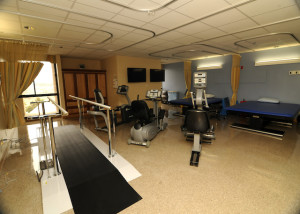I’m getting ready to head out to one of my favorite conferences, ISTE. I have to admit, having it so close to home in Philadelphia makes me less stressed about getting around and more able to focus on WHAT and WHO I am going to see!
What helped me get ready quickly was the ISTE Mobile app. Having the schedule, presenters, sessions and event information in one place made planning my learning so easy! This use of mobile technology is a great model for schools. Imagine students being able to access content about their school via an app on their smartphone….
Here are some of the sessions I plan on attending. Note, I reserve the right to change my mind at any time! Once I start talking to my colleagues or others in my PLN, I am bound to readjust. Over many years of attending conferences that afford so much choice at the same time (i.e. “There are so many awesome things to attend, I cannot decide!”), I’ve learned the technique of Divide and Conquer. To maximize your learning at these events, get together with your colleagues and make a plan to each attend different interesting sessions. Then report what you have learned back to everyone after the event is over! The sharing feature of Google Docs makes it extremely easy these days! Anyway, here is my initial list:
Monday
- Challenge Accepted: Gamification, Badging and Online Professional Development – Courtney Cohron, Andrew Swickheimer
- Educators Forming a Virtual Community of Practice: Who is Microblogging and Why? – Cynthia Clark, Brenda Pearson
- Is It Time to Give Up on Computers in Schools? – Wayne D’Orio, Will Richardson, Gary Stager, David Thornburg, Audrey Watters
- Is Your District Future Ready? – Karen Cator, Richard Culatta, Jeff Mao, Tom Murray
- Make Technology Meaningful: Level Up to Transformative Technology for the Classroom – Scott Garrigan
Tuesday
- Tech in 10: Effective Teaching for the Next Decade – Will Richardson
- Why Student Data? – Julie Evans, Gregory Firn
- Do the Ed Tech Hokey Pokey: Put Your Whole Self In – Kathy Schrock
- Personalizing Technology PD Through Learning Analytics Data – Sharon Brown, Maggie Hos-McGrane, Shabbi Luthra
- Choose Your Own Adventure PD – Veronica Gonzalez
Wednesday
- Genius Hour: Personalizing Learning to Engage, Empower, and Inspire Students – Erin Schiller
- Deeper Learning via Student-Generated Digital Peer Tutorials – Derek Barkalow
- Firsts, Fails, and Fantastical Tales: Implementing Staff Development for BYOD – Ryan Gooding, Karmin Ricker
I hope to learn some great tips that I will share here later on this blog. Follow me at @ezundel throughout the conference tonight, June 28, through July 1 for my aha moments.


